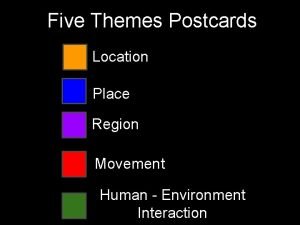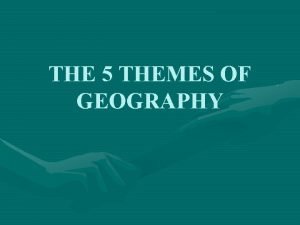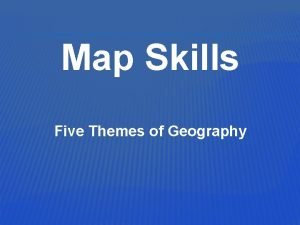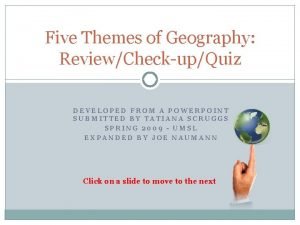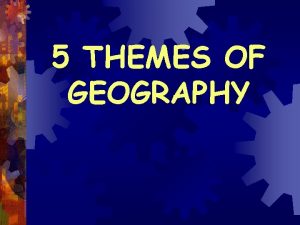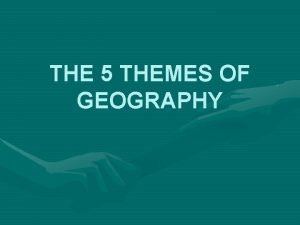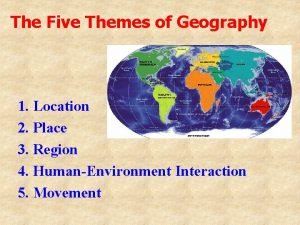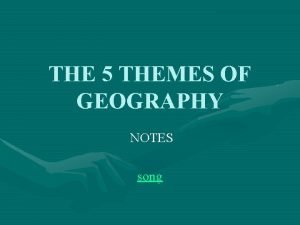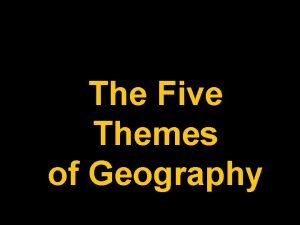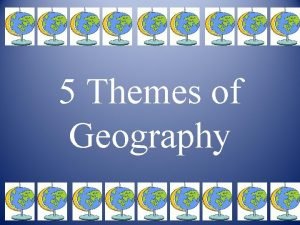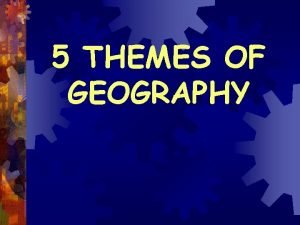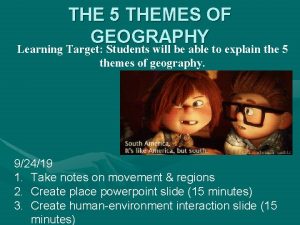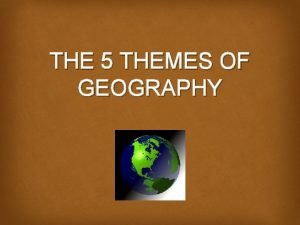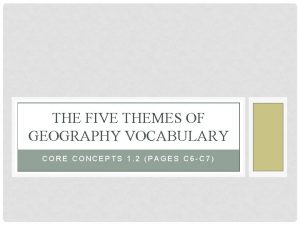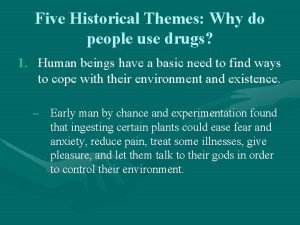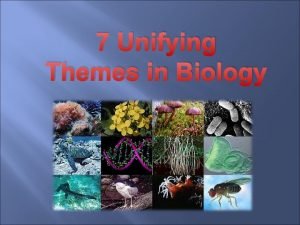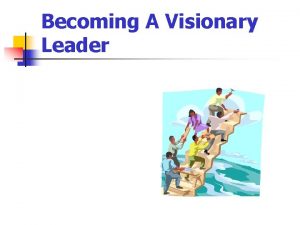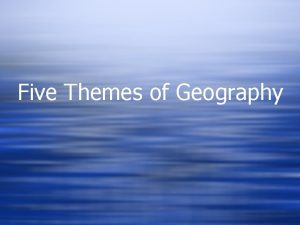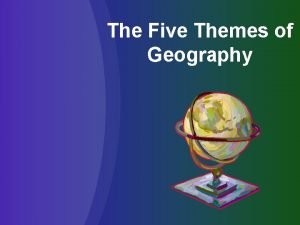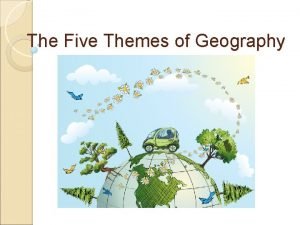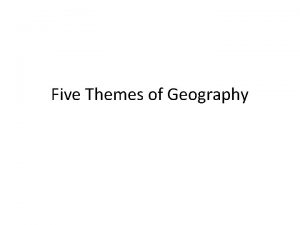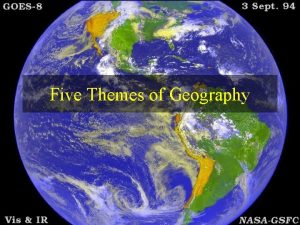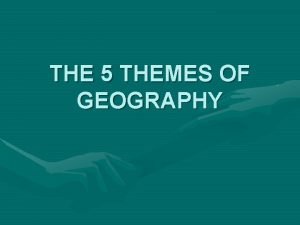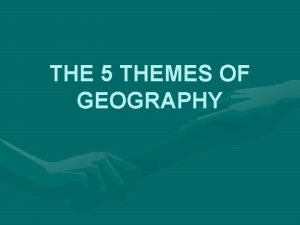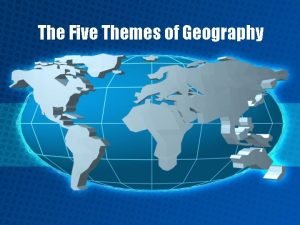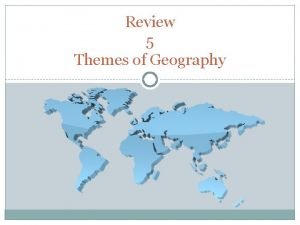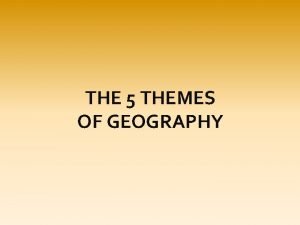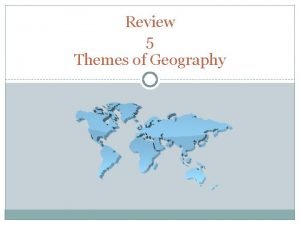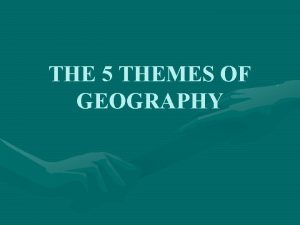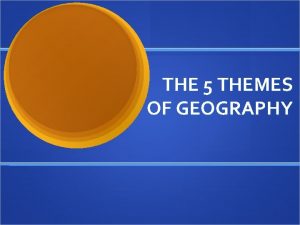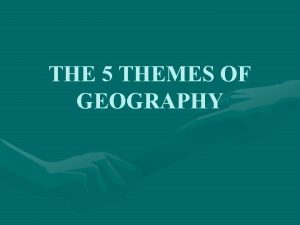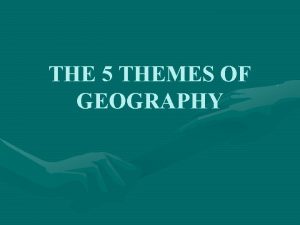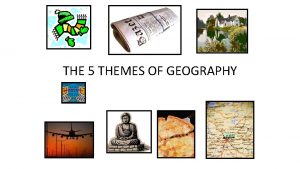Five Themes of Geography M ovement R egion



























- Slides: 27

Five Themes of Geography

M ovement R egion H uman and E nivronmental Interation (HEI) L ocation P lace

Geography Definition: The study of the distribution and interaction of physical and human features on the earth

Location § “Where is it? ” § Specific location on the earth § Two types of location: § Absolute location § Relative location

Location § Ms. Case’s Room § What is the absolute location? 1015 § What is the relative location? Near Mrs. Lizana’s room § Seven Lakes High School § What is the absolute location? 9251 South Fry Road Katy, TX 77494 § What is the relative location? South of I-10

ABSOLUTE (Location) § Exact location § Earth Divided into Hemispheres. N, S, E, W § Use longitude & latitude to find the location (25 N, 30 E) § Use coordinates, addresses, room numbers, etc. to find the absolute location.

RELATIVE (Location) § Relative Location= tells things around it to get you there. § USA is located south of Canada and north of Mexico. § I told you where USA was located by telling you things close to it.

Place § Answer’s the question… “What is it like there? ” § This will let you know the UNIQUE Physical and Cultural Characteristics of a location.

Place § How you would describe Houston according to Place? § § § California? New York City? Italy?

Human/Environment Interaction § “How do people relate to the physical world? ” § How do people change the environment to fit their needs? How do people change to fit the environment they are living in?

Human/Environment Interaction § Human beings work to alter their environments to make them better places or to provide needed goods. § Not all alterations are good ideas. Sometimes these alterations create new problems such as pollution. § Examples of HEI: Slash-and-burn farming, Three Gorges Dam, urban sprawl, and terraced farming, air conditioning

Human/Environment Interaction

Regions § Region will answer the question, “How areas similar or different? ”

Regions § A region is an area of the earth’s surface with similar characteristics (physical, political, economic, cultural). § There are three different types of regions: Formal, Functional, and Perceptual.

FORMAL (Region) § A formal region is a geographic area that can be defined by a similar human or physical characteristics. § Some examples: The Middle East, Latin America, and Sub-Saharan Africa

FUNCTIONAL (Region) § A functional region is a group of places that are linked together by a common purpose or use. § Usually the region has a central place, or hub, and links going to that main area.

FUNCTIONAL (Region) § Example: Houston and its suburbs (highways, subways, bus lines take people to the city for work, games, etc. )

PERCEPTUAL (Regions) § A perceptual region is a geographic area without precise borders and is known to have commonly held views. § Examples: Midwest, South, New England Bible Belt, Red Sox Nation, and Tornado Alley…. you can’t put an exact border on any of these but each one of them has distinct beliefs or similar characteristics.

PERCEPTUAL (Regions)

PERCEPTUAL (Regions)


Movement “How do people, ideas, and products move from one location to another? ”

Movement § Movement of items, people or ideas from place to place. § Three kinds of distance: Linear, Time, and Psychological Distance

LINEAR DISTANCE (Movement) § This simply means how far across the earth did a person, idea, or product travel. § This could be made longer or shorter by physical features (Before and after Panama Canal).

TIME DISTANCE (Movement) § This is the amount of time it takes a person, idea, or product to travel. § Modern inventions have shortened time distances (1800’s TX to California compared to now to California). § What about the internet? How quickly can ideas travel now?

PSYCHOLOGICAL DISTANCE (Movement) § This refers to the way people view distance. § When we were younger, some locations seemed very far…when you get older, it doesn’t seem as far. Why? § Studies say when we become familiar with a place we think it is closer than it actually is (Grandma’s house).

M R H E L P
 Human environment
Human environment The 5 themes of geography
The 5 themes of geography Movement five themes of geography
Movement five themes of geography Five themes of geography notes
Five themes of geography notes 5 themes of geography region pictures
5 themes of geography region pictures Themes of geography definition
Themes of geography definition Five themes of geography definition
Five themes of geography definition 5 themes of geography mexico
5 themes of geography mexico Five themes of geography definition
Five themes of geography definition 5 themes of geography notes
5 themes of geography notes Movement five themes of geography
Movement five themes of geography 5 themes of geography gallery walk
5 themes of geography gallery walk Five themes of geography definition
Five themes of geography definition 5 themes of geography chart
5 themes of geography chart 7 continents 5 oceans map
7 continents 5 oceans map Movement five themes of geography
Movement five themes of geography 5 themes of geography vocabulary
5 themes of geography vocabulary 5 themes of geography ap human geography
5 themes of geography ap human geography Five historical themes of drug use
Five historical themes of drug use Ib language themes
Ib language themes Five unifying themes of biology
Five unifying themes of biology Five themes of leadership
Five themes of leadership 5 themes of world history
5 themes of world history 5 elements and 5 senses
5 elements and 5 senses Dew the sovereign flower and drown the weeds
Dew the sovereign flower and drown the weeds The sounding cataract haunted me
The sounding cataract haunted me One in five challenge
One in five challenge 5 themes of geography
5 themes of geography
